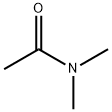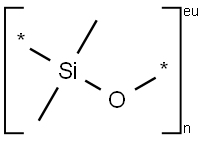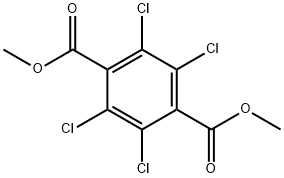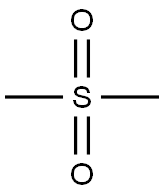Diisobutylcarbinol
- CAS NO.:108-82-7
- Empirical Formula: C9H20O
- Molecular Weight: 144.25
- MDL number: MFCD00008944
- EINECS: 203-619-6
- SAFETY DATA SHEET (SDS)
- Update Date: 2025-01-27 09:38:02

What is Diisobutylcarbinol?
Chemical properties
clear liquid
Occurrence
Reported found in cognac, white wine and red wine.
The Uses of Diisobutylcarbinol
Diisobutylcarbinol is used as a fragrance ingredient.
The Uses of Diisobutylcarbinol
2,6-Dimethyl-4-heptanol may be used in the preparation of the protected β-hydroxybutyrates. It may also be used as a hydrogen donor during the dynamic kinetic resolution (DKR) of various diols, monoprotected diols and the protected hydroxy aldehydes.
Preparation
By catalytic hydrogenation of diisobutyl ketone
Definition
ChEBI: Diisobutylcarbinol is a secondary alcohol.
Aroma threshold values
Detection: 1.3 ppm
General Description
A colorless liquid. Flash point 162°F. Less dense than water and insoluble in water. Vapors heavier than air.
Air & Water Reactions
Insoluble in water.
Reactivity Profile
Diisobutylcarbinol is an alcohol. Flammable and/or toxic gases are generated by the combination of alcohols with alkali metals, nitrides, and strong reducing agents. They react with oxoacids and carboxylic acids to form esters plus water. Oxidizing agents convert them to aldehydes or ketones. Alcohols exhibit both weak acid and weak base behavior. They may initiate the polymerization of isocyanates and epoxides.
Health Hazard
None expected
Fire Hazard
HIGHLY FLAMMABLE: Will be easily ignited by heat, sparks or flames. Vapors may form explosive mixtures with air. Vapors may travel to source of ignition and flash back. Most vapors are heavier than air. They will spread along ground and collect in low or confined areas (sewers, basements, tanks). Vapor explosion hazard indoors, outdoors or in sewers. Runoff to sewer may create fire or explosion hazard. Containers may explode when heated. Many liquids are lighter than water.
Chemical Reactivity
Reactivity with Water No reaction; Reactivity with Common Materials: No reaction; Stability During Transport: Stable; Neutralizing Agents for Acids and Caustics: Not pertinent; Polymerization: Not pertinent; Inhibitor of Polymerization: Not pertinent.
Safety Profile
Moderately toxic by ingestion and intraperitoneal routes. Mddly toxic by skin contact. A powerful systemic irritant by inhalation. A skin and eye irritant. Can cause central nervous system and liver damage when ingested. Combustible when exposed to heat or flame; can react with oxidizing materials. To fight fire, use alcohol foam, foam, CO2, dry chemical. When heated to decomposition it emits acrid smoke and fumes.
Properties of Diisobutylcarbinol
| Melting point: | -65.15°C |
| Boiling point: | 178 °C(lit.) |
| Density | 0.809 g/mL at 25 °C(lit.) |
| refractive index | n |
| FEMA | 3140 | 2,6-DIMETHYL-4-HEPTANOL |
| Flash point: | 158 °F |
| form | clear liquid |
| pka | 15.31±0.20(Predicted) |
| color | Colorless to Almost colorless |
| Odor | Characteristic. |
| Water Solubility | insoluble |
| JECFA Number | 303 |
| CAS DataBase Reference | 108-82-7(CAS DataBase Reference) |
| NIST Chemistry Reference | 4-Heptanol, 2,6-dimethyl-(108-82-7) |
| EPA Substance Registry System | 4-Heptanol, 2,6-dimethyl- (108-82-7) |
Safety information for Diisobutylcarbinol
| Signal word | Warning |
| Pictogram(s) |
 Exclamation Mark Irritant GHS07 |
| GHS Hazard Statements |
H227:Flammable liquids |
| Precautionary Statement Codes |
P210:Keep away from heat/sparks/open flames/hot surfaces. — No smoking. P280:Wear protective gloves/protective clothing/eye protection/face protection. P370+P378:In case of fire: Use … for extinction. P403+P235:Store in a well-ventilated place. Keep cool. P501:Dispose of contents/container to..… |
Computed Descriptors for Diisobutylcarbinol
New Products
1-Boc-4-cyanopiperidine tert-Butyl carbazate 1-(TERT-BUTOXYCARBONYL)-2-PYRROLIDINONE TETRABUTYLAMMONIUM CYANIDE TETRAHYDRO-2H-PYRAN-3-OL 3-Pyridineacrylic acid Nickel(II) perchlorate hexahydrate, 98% 4-Bromophenylacetonitrile, 95% 3-Bromo-4-fluoroaniline, 97% Sodium tetraborate decahydrate, 98% Palladium(II) acetate, trimer, Pd 99% 4-Bromo-2-chlorotoluene, 97% Tadalafil Clopidogrel bisulfate Sitagliptin Phosphate Monohydrate Cabergoline Fexofinadine HCl Etoricoxib 4-Amino Acetophenone 2-Chloro Acetophenone Amlodipine Base 2,3,5-Triiodobenzoic Acid Pyrrolidine Diiodo PentoxideRelated products of tetrahydrofuran








You may like
-
 108-82-7 Di- Iso Butyl Carbinol 98%View Details
108-82-7 Di- Iso Butyl Carbinol 98%View Details
108-82-7 -
 108-82-7 99%View Details
108-82-7 99%View Details
108-82-7 -
 2,6-Dimethyl-4-Heptanol 99%View Details
2,6-Dimethyl-4-Heptanol 99%View Details
108-82-7 -
 2,6-Dimethyl-4-heptanol CAS 108-82-7View Details
2,6-Dimethyl-4-heptanol CAS 108-82-7View Details
108-82-7 -
 2,6-Dimethyl-4-heptanol CAS 108-82-7View Details
2,6-Dimethyl-4-heptanol CAS 108-82-7View Details
108-82-7 -
 366789-02-8 Riveroxaban 98%View Details
366789-02-8 Riveroxaban 98%View Details
366789-02-8 -
 Carvedilol 98%View Details
Carvedilol 98%View Details
72956-09-3 -
 73590-58-6 Omeprazole 98%View Details
73590-58-6 Omeprazole 98%View Details
73590-58-6
